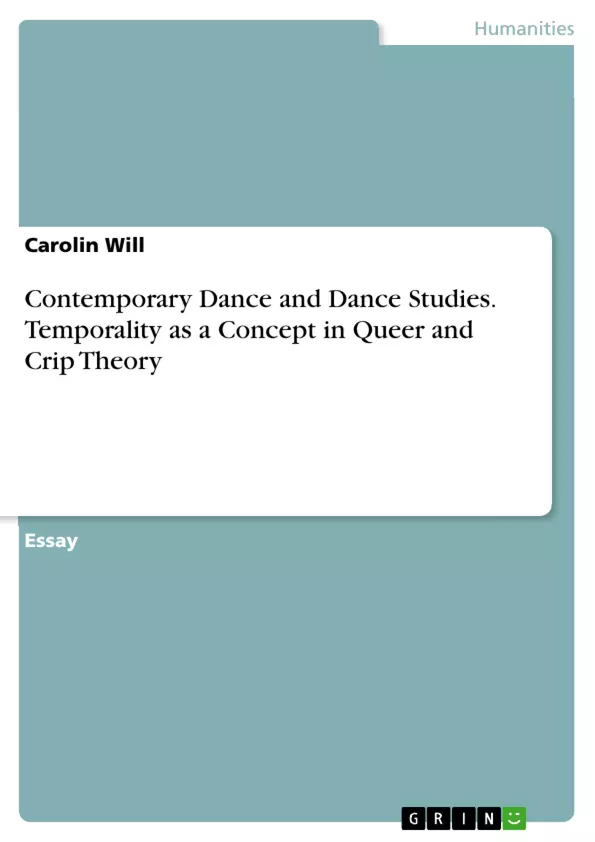This paper answers two questions about contemporary dance and its relation to the body and mind.
Dance studies emerged in the 1980s as a reaction against dance history. Many scholars critically questioned the ‘master narrative’ of Modernism that is often advanced in dance history. The essay "The Ballerina’s Phallic Pointe" by Susan Leigh Foster can be seen as a good example of this critique. How does Foster react against the dominant conceptualization of contemporary ballet?
Secondly the essay answers the question, why temporality is an important concept in both queer and crip theory. It explains both theories and their differences. Furthermore, it answers the question, whether crip temporality can be an interesting concept to analyse disability dance. To illustrate results the essay analyses Daniel Linehan's "Body of Work" in relation to crip time.
Inhaltsverzeichnis (Table of Contents)
- Dance Studies as a Reaction against Dance History
- The Historical Changes of Ballet
- Susan Leigh Foster's Critique of Ballet
- The Body as Capital
- Gendered Roles in Ballet
- The Travesty Dancer
- Temporality as a Concept in Queer and Crip Theory
- Temporality in Queer Experiences
- Temporality in Disabled Experiences
- Crip Time
- Body of Work by Daniel Linehan
Zielsetzung und Themenschwerpunkte (Objectives and Key Themes)
This text examines the historical development of ballet and its limitations in regard to gender and disability. It analyzes the influence of gendered roles and power structures in the art form and introduces crip time as a concept for understanding temporality in disability dance.
- The history of ballet and its evolution as an art form
- The role of gender in ballet and its representation in the historical narrative
- The critique of traditional ballet history and its male-centric perspective
- The concept of crip time and its application in understanding disability and temporality
- The analysis of a contemporary dance piece in relation to crip time and disability aesthetics
Zusammenfassung der Kapitel (Chapter Summaries)
The first chapter traces the historical development of ballet from the courtly dances of the 15th century to the standardization of movements and roles in the 19th century. It highlights the influence of gender norms on the portrayal of female and male dancers in ballet history.
The second chapter focuses on Susan Leigh Foster's critique of ballet history and her analysis of the phallic pointe. Foster argues that the interpretation of ballet is male-centric and examines the power dynamics between male and female dancers.
The third chapter delves into the concept of crip time, which challenges the normative understanding of temporality in relation to disability. It explores the different experiences of time for queer and disabled people and presents a new framework for understanding temporality in disability dance.
The fourth chapter analyzes the contemporary dance piece "Body of Work" by Daniel Linehan in the light of crip time. It explores the themes of memory, embodiment, and the passing of time as depicted in the work.
Schlüsselwörter (Keywords)
Key terms and concepts explored in this text include ballet history, gender roles, disability studies, crip time, temporality, queer theory, dance aesthetics, embodiment, and contemporary dance.
- Quote paper
- Carolin Will (Author), 2020, Contemporary Dance and Dance Studies. Temporality as a Concept in Queer and Crip Theory, Munich, GRIN Verlag, https://www.grin.com/document/923367



